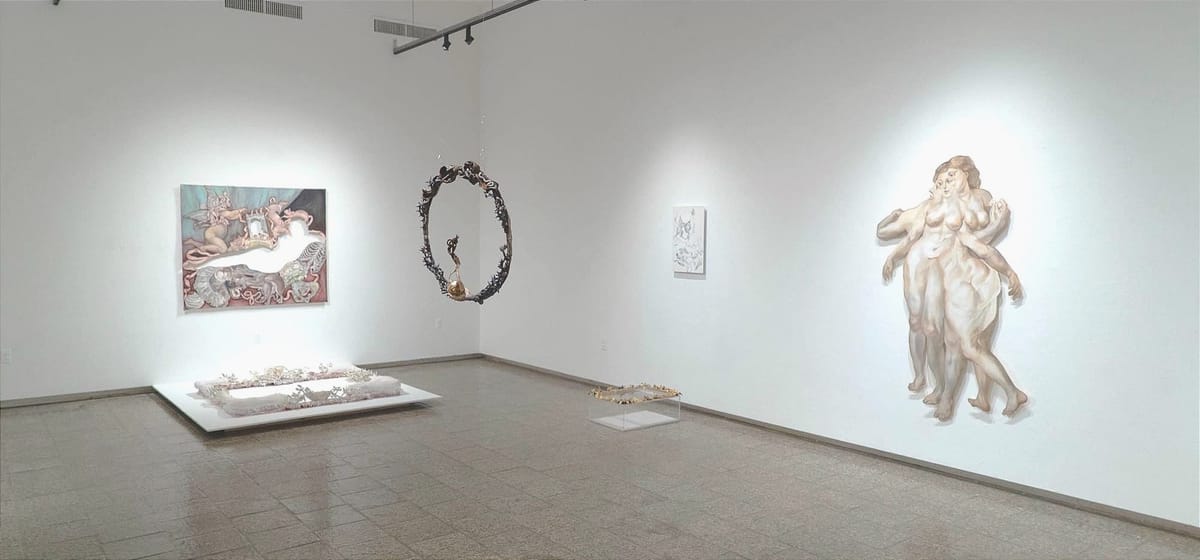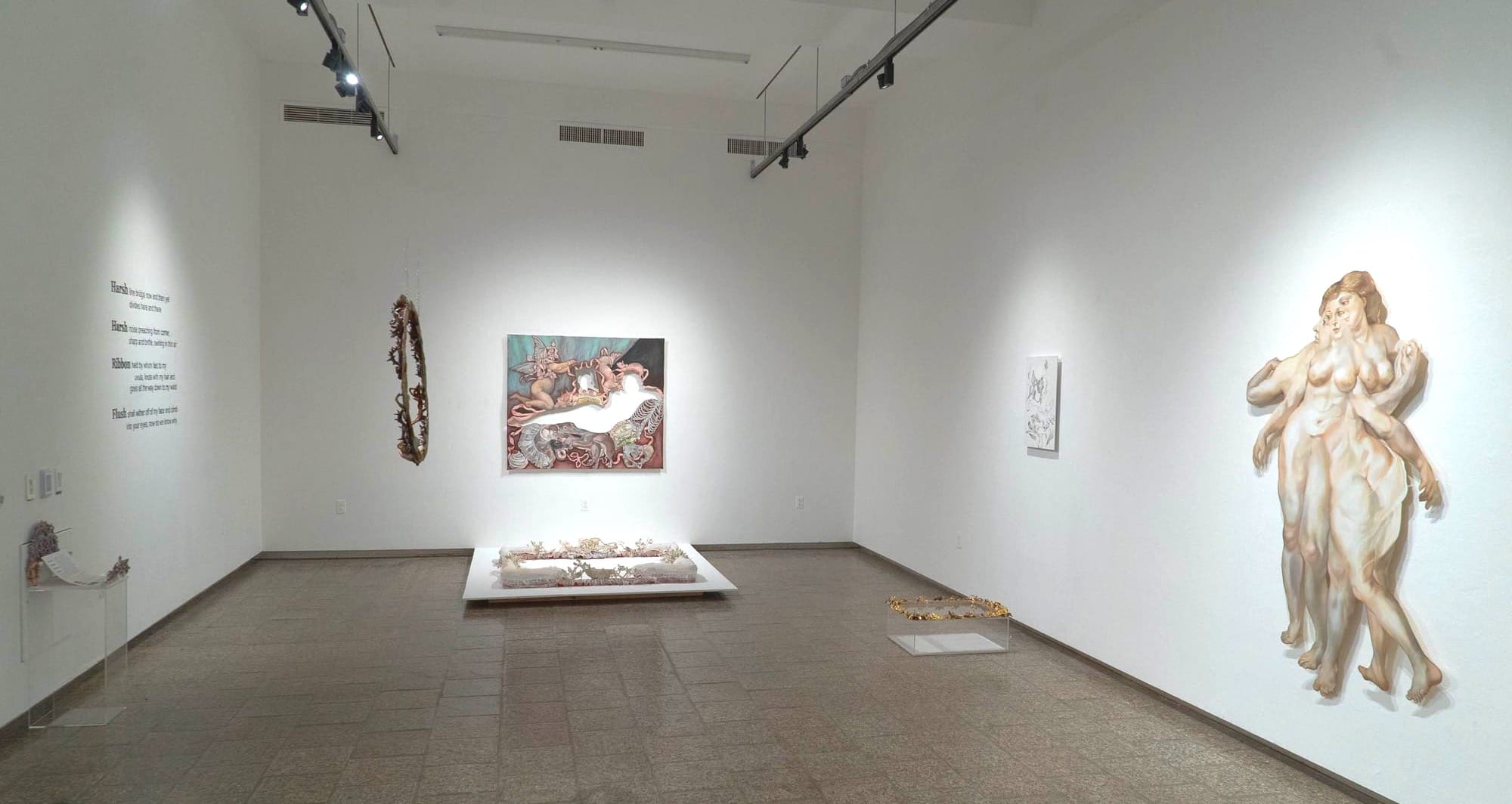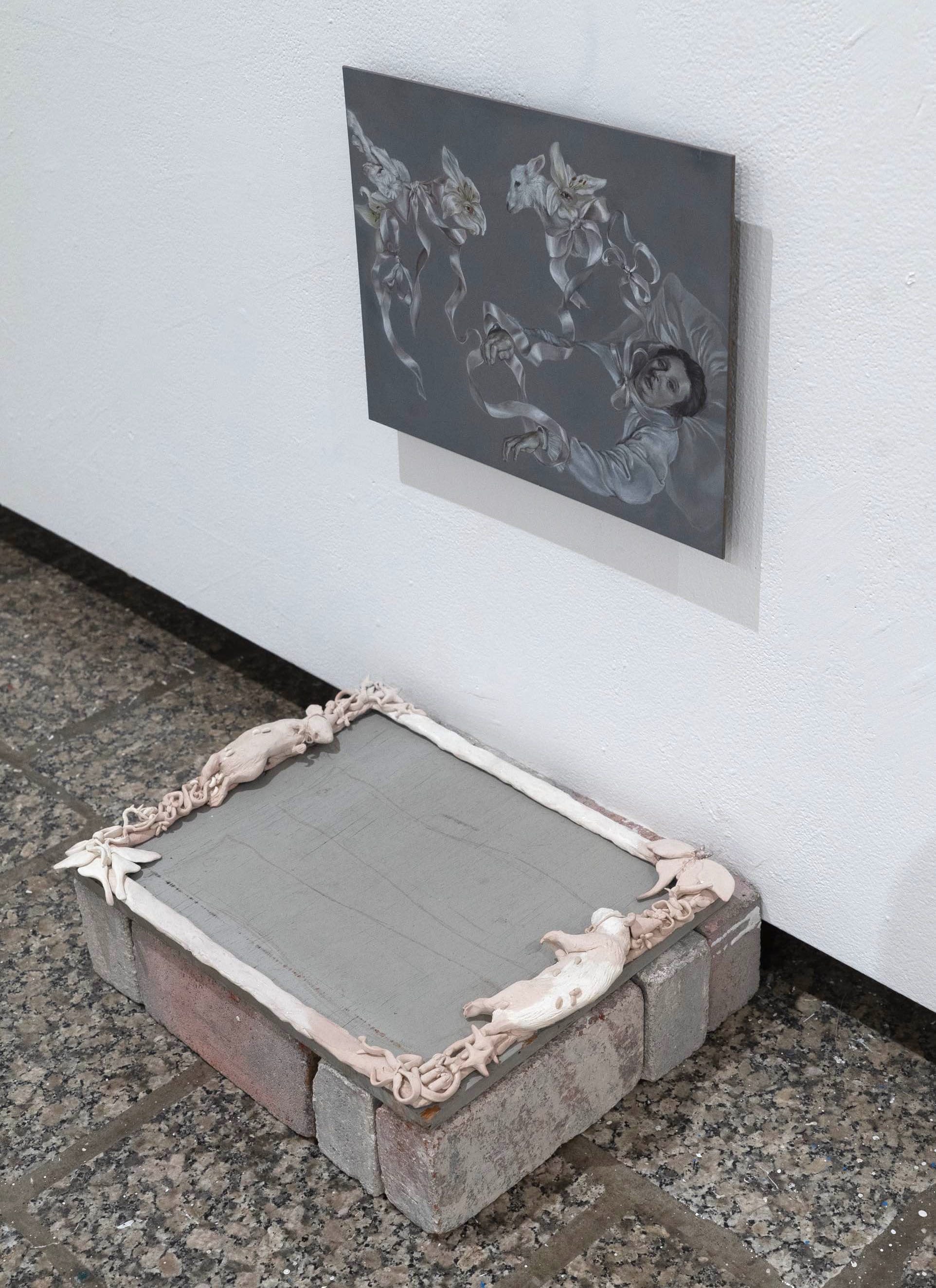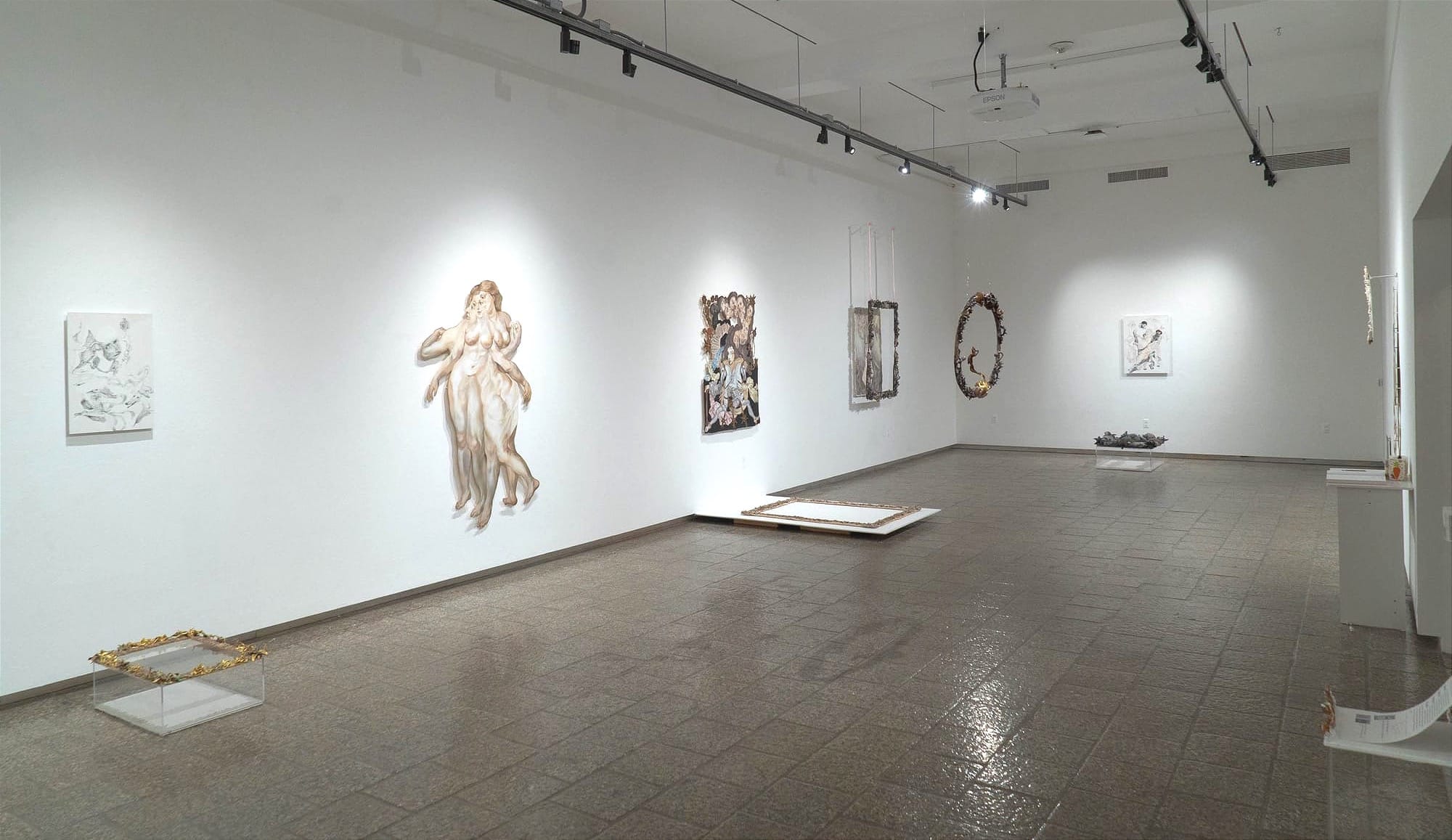
The Ruth Weisberg Prize of Drawing is awarded to one outstanding undergraduate student selected in a highly competitive process each year at USC Roski, which results in a gallery presentation of an independent art project. This year we have the opportunity to interview Terrie Yu, who just opened her grant exhibition Harsh Harsh Ribbon Flush.
Can you give us a brief introduction of your show?
T: Most of the pieces are about reimagining very recognized famous baroque artworks. There are mainly painting and sculpture and most of the topic is about the generals, Greek mythology or the palaces. And through reimagining it, coming up with my own interpretation about the works, for me it is a critique about the institution, because these are highly institutional representative work. I'm doing it to point out the hidden problems with these highly recognized works, which are still considered as the most important works within art history and being viewed and appreciated so much. There are a lot of frames in my show. For me they represent sort of the institutional value and authority. Everything you put in a frame tells that it’s precious, and especially when you put it up on the wall, that gives it a lot of power and separate it from everything else. Our aspiration or institutional aspiration is held within the frame, which acts like a power tool. In my show, I choose to separate the drawing and the frame, and by putting it on the floor is trying to take away its power.

How did you develop your idea for this show?
T: The beginning idea of my show was really just about retrospection: how did I start my own art career? When I first got into art, I only had access to or knew arts such as Renaissance art, fine paintings by Leonardo da Vinci. And when I just started my art practice, I truly believe that these works are the true art. But then as I continue my art study and look back at those pieces that influenced me so much, I see a lot of ethnic problems in our current context. So I decided for this show, I decided to really grapple this opportunity to self-introspect and reflect a larger context about institutional problems. When people look at these works and talk about them, they say how beautifully they were done or how perfect they look, how vivid the colors and everything like that, but they don't talk about the context and they don't talk about the historical or social background about it. So I choose Baroque specifically because of that aesthetic.
Is it the idea you want to further develop in future works?
T: I definitely would continue to talk art's relationship with society and institution, but I can move beyond. This show is really specifically focusing on art from the Baroque era, because of its delicacy and how that aesthetic relates to power in a very different way than today. What was seems as feminine today represented authority and power which is masculine and patriarchal in that era. I find that shift in style very interesting. For my future practices, I definitely do want to talk about certain norms and trends or styles from a feminine point of view, but I probably would move beyond Baroque.
Which would you say is your favorite work in this show?
T: My favorite work is actually not the most grand-looking work, but the one titled Rotten Féte, death of the virgin. That is the smallest work in the show, and it's installed in a very particular way, on the floor when you find a rat at the corner of your house. This work just feels really intimate to me. It’s like really nice, cute, and sweet in a decorative feminine style but with a sense of abjection, because it is talking about death. I like the duality of it, like all my works, the grotesque and the seductiveness.

What would you think is your biggest challenge during this process?
T: For all the works, I spend a long time doing them. When doing it for a period of long time, it’s easy to question yourself. Like you'll question your works, because every single detail needs to pull up together to eventually bring up the whole work. So while you're focusing on those little details, it's really draining. You need to constantly tell yourself that you believe in the works and you believe in your own practice to be able to finish and finally present the biggest entity. Because I'm a really precise person with my work. I really need every single part to make sense and to be the best representation of my concept. So sometimes when I want to give up, there's like a voice in my brain that keep telling me not to. You don't really see the result directly, so there's a lot of like doubt during the process of making and that is the hardest. Like you just have to push it through.
Anything you want your audiences to take away from this show?
T: I do want to express a critical message for my show, but then at the same time I make the works look really visually pleasing, so I do wish the audiences to walk away with sort of a visual satisfaction. I don't want to force a critique or a point of view on anyone, but it will be nice if they can see the story that I'm trying to tell and walk away with another way of thinking about these institutional recognized works. As artists, we have a deeper idea of how to look at art critically because we study it, but the majority doesn't really have that much access the professional art study, and are more susceptible from the institutional influence. I truly wish that people could realize the duality or the hidden context of the problem within these things that the institutions choose to not point out.


